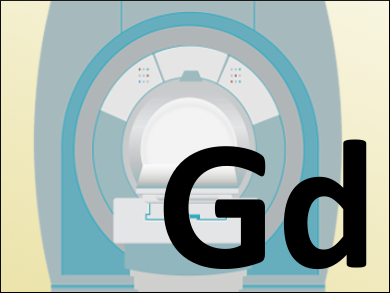Magnetic resonance imaging (MRI) is used in medicine to produce pictures of structures inside the body. In contrast to X-ray-based techniques, MRIs use strong magnetic fields to create these images. To improve the visibility of details in MRI scans, contrast agents can be used. There are often based on gadolinium complexes. However, gadolinium is toxic for the kidneys and the brain, and free gadolinium ions can remain in the body for significant amounts of time. Highly stable Gd chelate complexes might alleviate this problem.
Tae-Jeong Kim and Yongmin Chang, Kyungpook National University, Daegu, Republic of Korea, and colleagues have developed stable macrocyclic gadolinium chelate complexes to be used in liver MRIs. The team complexed Gd(III) in a 1,4,7,10-tetraazacyclododecane-1,4,7-trisacetic acid (DO3A) cage with an ethoxybenzyl (EOB) moiety.
The macrocyclic cage complex tightly binds Gd, is kinetically stable, and avoids the formation of free Gd ions. It does not affect the viability of kidney cells, reducing health risks. The compound accumulates specifically in the liver. The team tested the contrast agent in mice and found that it helped to easily differentiate between normal liver and cancerous tissue. According to the researchers, this makes the developed compound a practical, liver-specific MRI contrast agent with significant benefits over linear complexes.
- Gadolinium Complex of 1,4,7,10-Tetraazacyclododecane-1,4,7-trisacetic Acid (DO3A)–Ethoxybenzyl (EOB) Conjugate as a New Macrocyclic Hepatobiliary MRI Contrast Agent,
Ah Rum Baek, Hee-Kyung Kim, Subin Park, Gang Ho Lee, Hyo Jeung Kang, Jae-Chang Jung, Joon-Suk Park, Hun-Kyu Ryeom, Tae-Jeong Kim, Yongmin Chang,
J. Med. Chem. 2017.
DOI: 10.1021/acs.jmedchem.7b00060
